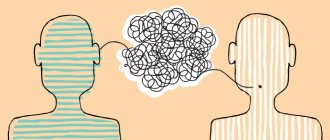Both natural and artificial conditioned reflexes are formed only under certain conditions. These conditions are as follows.
1. When a conditioned reflex is formed, the action of two stimuli - indifferent and unconditional - must coincide in time, more precisely, the indifferent agent must somewhat precede the action of the unconditioned stimulus.
So, if in the laboratory a dog develops a positive conditioned salivary reflex to the sounds of a metronome, which, as is known, are not directly related to the food reaction, then the experimenter first turns on the metronome (indifferent stimulus), then after a few seconds gives the animal food (unconditioned stimulus). , after which both stimuli act together. If the experiment is performed in the reverse order, the sounds of the metronome will not acquire the value of a signal of a food reaction. The food unconditioned stimulus in this case reinforces the action of the indifferent stimulus.
2. When forming a conditioned reflex, it is necessary to repeat the combined action of the indifferent and unconditioned stimuli several times.
Next come the conditions related to the internal state of the animal’s body. It has been proven that the action of stimuli of the same quality, strength and duration leads to different results depending on the internal conditions of the body.
3. When a conditioned reflex is formed, the cerebral hemispheres must be in an active state. In a drowsy, very tired animal or person, conditioned reflexes are not formed or are formed with great difficulty. The active state of the cortex and its nervous tone depend on a number of reasons. The cortex is activated by excitations coming from subcortical formations (nerve centers and the reticular system). Activating mechanisms are also embedded in the cortex itself. It has been established, for example, that if an experiment is conducted on the formation of conditioned reflexes in a dog in a dark chamber, then not only conditioned, but also unconditioned reflexes decrease. On the contrary, in bright light all conditioned reflexes increase. The illumination of the environment in this case affects the tone of the cortex (increases or decreases it).
4. During the formation of a conditioned reflex, the cerebral hemispheres should be free from other activities, that is, during the experiment they should not be affected by extraneous stimuli. They will inhibit the formation of a conditioned reflex.
5. The animal with which experiments are carried out must be healthy. This condition excludes the influence of internal pathological stimuli sent to the cerebral hemispheres and inhibiting the formation of a conditioned reflex.
Finally, I. P. Pavlov identifies a condition concerning the ratio of the strength of combined stimuli.
6. The unconditioned stimulus must be stronger than the conditioned one. However, the strength of stimuli must be considered not only in a physical sense, but also depending on three factors: the biological significance of the stimulus for a given animal, the internal state of the animal’s body at a given moment, and, finally, the previous experience of the animal. The faint rustle of a mouse scratching the floor will cause a more lively reaction in a cat than a clap of thunder: the rustle signals the proximity of food; in a hungry dog, a conditioned reflex with food reinforcement is formed more quickly than in a well-fed one, because the state of hunger increases the tone of the cortex; An old, experienced fox sneaks toward a person’s home in search of food more carefully than a little fox: the faint creaking of a door or the grumbling of a dog are strong signals of danger for it, while an inexperienced little fox will not pay attention to them.
Here you can read Inhibition of conditioned reflexes and its types
What is a conditioned reflex?
A conditioned reflex is an acquired reflex, characteristic of an individual, and not genetically fixed (i.e., not inherited). The formation of such reflexes depends on the conditions of their occurrence, which was the reason for the appearance of the name of the group. The foundation for their appearance is the presence of a connection between the emerging stimulus and the unconditioned reflex act, which serves as reinforcement for it. In this case, the connection has a certain time frame. The brain, both its cortex and the formations located under it, are responsible for the generation and manifestation of reflexes.
One of the first scientists to seriously study this topic and propose the definition of “conditioned reflex” in 1903 was the Russian physiologist I.P. Pavlov.
Biologically, the reflex is intended to transform external stimuli of a neutral nature into a set of significant signals that adapt the behavioral characteristics of the organism to current conditions. In fact , they ensure the body’s adaptation to emerging phenomena in order to generate useful behavior and eliminate negative effects on the body. Conditioned reflexes provide adaptation to both natural influences and the actions of the individual’s social environment.
Comparison table between conditioned and unconditioned reflexes
| Comparison of the characteristics of conditioned (acquired) and unconditioned (innate) reflexes | |
| Unconditional | Conditional |
| Congenital | Acquired during life |
| Present in all representatives of the species | Individual for each organism |
| Relatively constant | Appear and disappear with changes in the external environment |
| Formed at the level of the spinal cord and medulla oblongata | Carried out through the work of the brain |
| Laid in utero | Developed against the background of innate reflexes |
| Occurs when a stimulus acts on certain receptor areas | Manifest under the influence of any stimulus that is perceived by the individual |
Higher nervous activity operates in the presence of two interrelated phenomena: excitation and inhibition (congenital or acquired).
Examples of conditioned reflexes
The most striking example of a conditioned reflex is the secretion of saliva in pets at the sound of a food bowl. Similar processes can be developed in humans. The condition for their occurrence is the high repeatability of situations with the coincidence of two processes, for example, hitting a bowl and placing food in it.
Similarly, in animals, the reaction to a bell will be to flex the paw if the procedure in which the operation of the bell coincided with the effect of an electric current on the animal, stimulating the flexion reflex of the paw, has been previously repeated many times.
For a child, a conditioned reflex in the form of withdrawing his hands from fire is common, but it will develop only if the child has previously received a burn, and the body is protected from the recurrence of negative effects on it.
Distinctive features of conditioned reflexes
- Absent in newborns. The unconditioned reflex is inherent in nature, while the conditioned reflex is acquired and individual.
- The development of such reflexes is the prerogative of the higher department of the central nervous system.
- They can be temporary in cases where the stimulus does not have unconditional reinforcement.
- Conditioned reflexes are not fixed genetically, i.e. are not inherited;
All conditioned reflexes are divided into two component categories: natural and artificial. The first include the natural properties of the stimulus, for example, the type of fire. The second includes reflexes to stimuli that do not have a direct connection with the action, for example, the operation of a light bulb for Pavlov’s dog.
Unconditioned reflexes
Unconditioned include innate reflexes , which are inherited and inherent in all individuals of a particular species. Their main task is to perform protective functions, procreate and maintain the stability of the internal environment of the body.
Unconditioned reflexes are formed either at birth or after some time ( for example, kittens begin to land on four paws when falling from any height only by 4-5 weeks) and remain unchanged throughout the life of a person or animal.
They can change or disappear completely only in exceptional cases, in particular, due to a serious disease of the nervous system. Some unconditioned reflexes are characteristic only of a certain age.
Thus, the grasping reflex inherent in a newborn is actively manifested only up to 3-4 months, and sexual desire (libido) fades as one approaches old age.
Unconditioned reflexes inherited from parents are reproduced in every generation. Their reflex arcs pass mainly through the spinal cord and do not affect the cerebral cortex.
A complex sequence of unconditioned reflexes with some assumptions is called instinct .
Principles of generating conditioned reflexes
The foundation of acquired skills is conditioned reflex mechanisms. They, in turn, ensure the emergence of connections between the associative neurons of the cerebral cortex and the nuclei located under it in the cerebral hemispheres.
The emergence of conditioned reflexes is based on the transformation of insignificant signals into significant ones through repeated repetition in the presence of an important unconditional stimulus, for example, the provision of food or physical influence. As a result, conditioned reflexes act as one of the criteria for assessing an organism, human or animal.
Physiologically, the process of the emergence of a conditioned reflex, using the example of Pavlov’s experiments, involves the passage of the following stages:
- The emergence of a focus of excitation in the cerebral cortex as a result of exposure to a conditioned stimulus, for example, turning on a light bulb.
- The emergence of a focus of excitation caused by an unconditioned stimulus, for example, the provision of food.
- With a certain periodicity and frequency of occurrence of the stimulus, a temporary relationship is formed between two foci of excitation.
- Subsequently, the appearance of a conditioned stimulus (light bulb) leads to the emergence of reflexes initially experienced by the provision of unconditioned stimuli (food)
Education mechanism
In the initial experiments, stimulation of the taste receptors of the tongue when giving food came through the centripetal nerves to the centers of taste sensitivity, located not only in parts of the brain stem, but also in the cortex.
After analysis and synthesis of excitation in the digestive centers, excitation through the centrifugal nerves traveled to the digestive glands, where digestive juices were secreted. In this reflex pathway, it is not difficult to notice parts of the reflex arc discussed earlier. But this is still an unconditional reflex activity.
When the light began to be turned on before feeding the animal, the receptors in the retina of the eyes were irritated, and the excitation was transmitted along the centripetal nerves to the subcortical and then cortical centers of vision. When combining light and feeding, two centers were excited: digestion and vision.
The excitations irradiated (spread), and a temporary connection was formed between the centers. It was through this that the stimuli passed from the center of vision to the food center and further to the digestive glands. This may explain the secretion of saliva in response to the lighting of a light bulb, even if food is not given.
The mechanism of formation of a conditioned reflex
Based on the unconditioned reflex
In humans, conditioned reflexes are developed throughout life. But they are also obtained through special studies. For example, pressing on the eyeballs is accompanied by a slowing of the heartbeat, which is an unconditioned reflex.
If this reflex is evoked in combination with some indifferent stimulus, then over time, under the influence of the indifferent stimulus, without pressing on the eyeballs, the heartbeat will become less frequent. A conditioned reflex develops. In the same way, you can develop conditioned reflexes that change breathing, intestinal motility, vasoconstriction, etc.
In the laboratory of I.P. Pavlov it was shown that a conditioned reflex can be developed only if an indifferent stimulus precedes an unconditioned signal. In other combinations, conditioned reflexes are not formed, and if they are formed, they are weak and quickly fade away. It is important that the conditioned stimulus be weaker in biological importance than the unconditioned one.
Time can serve as a conditioned stimulus. So, if meals are organized at the same time, then when this time comes, signs of increased secretion of the digestive glands appear, and the feeling of appetite flares up. This should not be forgotten when organizing your diet and do not interfere with meal times.
The entire daily routine, the rhythm of the working day, sleep and awakening are subordinated to conditioned reflexes along with unconditioned ones. It is no coincidence that work is more productive if the daily work schedule is maintained. This creates a relaxed lifestyle, so necessary to maintain mental and physical health.
Based on a conditioned reflex
Conditioned reflexes can be evoked not only on the basis of unconditioned ones, but also on the basis of previously formed conditioned, well-formed, persistent ones. In this case, a previously developed reflex is used instead of an unconditioned stimulus.
On the basis of such a conditioned reflex, it is possible to achieve the formation of a third reflex. However, this is more difficult to do in animals. A person can develop 50-100 conditioned reflexes that rely on each other.
Examples of this are the work of operators standing at the control panel, pilots, astronauts, especially during takeoffs and landings, etc. This is possible thanks to the highly developed abstract (abstract) thinking that is inherent in humans. Consequently, abstract thinking is determined by a person’s ability to form complex conditioned reflex connections.
The main criteria for the appearance of a conditioned reflex
The development of a conditioned reflex requires the presence of certain conditions:
- The conditioned stimulus must have a certain strength.
- The appearance of a conditioned stimulus should predict the appearance of an unconditioned stimulus.
- The unconditioned stimulus must be more powerful.
- No other irritants.
- Absence of pathologies in the body of the subject under study.
If the specified conditions are met, the formation of almost any conditioned stimulus is possible.
Needs and behaviors
Congenital species:
- Unconditioned reflexes. Instincts:
- Vital: food, regulation of forces, etc.
- Role-playing, zoosocial: gender, parental, child, territorial.
- Self-development, ideal: freedom and overcoming, play, research, imitation.
- Approximate.
- Imprinting.
Purchased, individual:
- Conditioned reflexes.
- Alternation of sleep and wakefulness.
- Behavior formed through learning:
- Voluntary memory and attention.
- Walking, speech, household, sports, professional skills.
Exploratory behavior –> formation of a spatio-temporal image of the surrounding world.
- Orienting reflex.
- Need for information –> exploratory behavior: formation of an image of the surrounding world.
Classification of conditioned reflexes
There are a large number of conditioned reflexes, so a classification system has been developed for them based on various criteria.
- Based on unconditioned reflexes , they are divided into: food, sexual, protective, and so on.
- Depending on the receptors involved, it is customary to divide conditioned reflexes into exteroceptive, interoceptive and proprioceptive.
- According to the structure of the conditioned stimulus, reflexes are simple and complex. Moreover, in fact, most stimuli are complex in nature, combining various, interrelated stimuli.
- Conditioned reflexes can be of one of three orders. The first category includes stimuli that have additional unconditional reinforcement. The second order includes stimuli that are reinforced by a conditioned stimulus that has previously ensured the appearance of a conditioned reflex. The duration of the reflex chains is determined by the capabilities of the nervous system of a living creature. If in fish it consists of no more than two elements, then for primates the chains can be formed in twenty orders.
- Depending on the source of origin of the stimulus, reflexes occur natural and artificial. In the first case, the stimuli are of natural, natural origin. Compared to the background of artificial stimuli, they are simpler and more understandable for the subject being studied.
Inhibition of conditioned reflexes
For the adequacy of the behavior of the organism and its maximum adaptation to external influences, only the appearance of conditioned reflexes is not enough. A response action is required that has the opposite direction to the emerging stimulus. This process is called inhibition, and is designed to cut off emerging reactions for which there is actually no need. Research conducted by I.P. Pavlov led the author to identify several variants of cortical inhibition. Unconditioned inhibition is a response to various external stimuli. Conditioned inhibition is determined by internal processes.
With unconditional inhibition, a new focus of excitation appears, the generation of which is associated with an external stimulus, for example, the appearance of a sharp and loud noise. When exposed to it, the conditioned reflex becomes significantly weaker or disappears completely.
Conditioned inhibition at the place of origin fully corresponds to the point at which the center of the conditioned reflex is located. The development of this type of inhibition requires consistency. This can be seen in the example of Pavlov's dog. If at first, when you turn on the light bulb without providing food, stable salivation is observed, then over time it will gradually fade away, that is, conditioned inhibition appears.
Braking
External unconditional inhibition (innate) is carried out by the action of a very strong stimulus on the body. The termination of the conditioned reflex occurs due to the activation of nerve centers under the influence of a new stimulus (this is transcendental inhibition).
When the organism under study is exposed to several stimuli at the same time (light, sound, smell), the conditioned reflex fades, but over time the indicative reflex is activated and the inhibition disappears. This type of braking is called temporary.
Conditioned inhibition (acquired) does not arise on its own; it must be developed. There are 4 types of conditioned inhibition:
- Extinction (disappearance of a persistent conditioned reflex without constant reinforcement by the unconditioned);
- differentiation;
- conditional brake;
- delayed braking.
Inhibition is a necessary process in our life. In its absence, many unnecessary reactions would occur in the body that would not be beneficial.
Example of external inhibition (dog's reaction to a cat and the SIT command)









